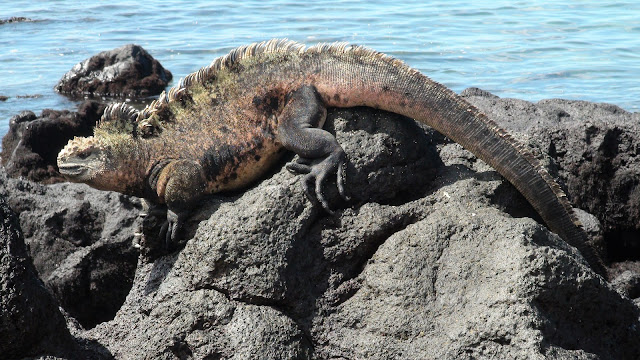I was sorry to read that Howard Bern had died in January aged 91. Howard was probably the last survivor of the heyday of comparative endocrinology that was such a powerful force in university zoology departments from the 1950s to the 80s.
May first introduction to his work was in the first week of the first term at Sheffield when Ian Chester Jones (1916-1996) was Professor (university departments then, wisely, had only one professor). Chester Jones had worked hard to promote comparative endocrinology while working on the adrenal cortex and, for some reason, decided to abandon a classical introductory course and, instead, ran one on comparative endocrinology. This brilliant idea pitched us straight into a leading-edge subject. But that course came at a price: the textbook was £4.14.0d - the most expensive book for any course by far and we felt very hard done by. At today’s prices, it would cost £78 and even more if calculated from the rise in pay over 50 years.
The textbook was, of course, A Textbook of Comparative Endocrinology by Aubrey Gorbman and Howard Bern (Wiley, New York and London, 1962). Printed copies had only just arrived in the UK in time for the new student intake.
The final paragraph of the preface is worth reading, 50 years later:
We feel that endocrinology has advanced beyond the point where its goal is merely the better understanding of physiological mechanisms in a single species, be it man or the classical laboratory rat. Endocrinologic information now may be applied to the elucidation of general biologic problems as they arise in comparative physiology, in embryology and in the study of evolution. Rightly or wrongly this field has become known as “comparative endocrinology” … In this, the first textbook of comparative endocrinology, we hope that the student will recognize the important biologic problems whose solutions may be approached through endocrinologic investigation. This may not always be easy because the abundance of facts in this field sometimes obscures the general principles to which they pertain.
I then met Howard a number of times at Berkeley (where he worked from 1948 until his death) when I was visiting Dorothy Pitelka in what was then the Zoology Department. He also came to Gordon Conferences I attended in New Hampshire in the 70s and early 80s. At any meeting he was a major asset, full of rapid-fire comments.
In those days, the room used for Gordon Conferences at Colby-Sawyer College in New London, NH, had very comfortable easy chairs at the front and hard chairs further back. Howard made sure he got there early. At the 1975 meeting of what is now known as the mammary gland biology conference, Jim Linzell was giving the main invited (Thursday Night) talk. S.J. Folley, the endocrinologist, had recently died and Jim had referred to his work early in the lecture. When he came to a problem to which he didn’t have an answer, he looked towards the sky and said, Perhaps Folley knows. Instantly, Howard turned round to face the audience and proclaimed loudly, He’s looking in the wrong direction!
Then at the 1981 Gordon Conference he was again at the front when Joe Meites (1913-2005), another well-known endocrinologist of the time, rose to ask a question: Let me play devil’s advocate for a moment…. Before he could continue, Howard interrupted with: Don’t be fooled by that. It isn’t an advocate, it’s the Devil himself!
 |
| Biology of Milk Gordon Conference, Colby-Sawyer College, New London, New Hampshire, 9-13 June 1975 |
 |
1975: John Kinsella (1938-1993), Dorothy Pitelka (1920-1994), Howard Bern (1920-2012), Jim Linzell (1921-1975), M.P., R Lee Baldwin (1935-2007)
|
 |
| Mammary Gland Biology Gordon Conference, Colby-Sawyer College, 8-12 June 1981 |
Howard taught me a lot about the politics of US science in a very short space of time. In public, comments and questions were polite to the point Brits were often asking for the sick bucket. However, Howard had been elected to the National Academy of Sciences in 1973 and in 1975 asked Jim Linzell, Dorothy Pitelka and I to join him in choosing a delegation to represent the USA on a visit to Japan (Howard was well know in Japan and had an onsen in his Berkeley back yard). Then the knives came out on who could be 'let out' in the wider world. We soon learnt that the public and private faces of American science were very different.
The last time I spoke to Howard was, I think, in 1986 at the Physiological Congress in Vancouver. He was giving an invited talk early in the morning on the UBC campus and I got to the lecture theatre early, so early that I was the first to arrive. Howard was already in the front arranging his script and slides. ‘Morning Howard I shouted across the theatre. Are you looking forward to giving this lecture at this hour in the morning? The shouted reply was instant: No, !‘m shitting green, shitting green, as the second and visibly shocked member of the audience entered.
 |
| Colby-Sawyer College. The meeting room, coffee and the essential frig were through the large doors at the bottom of the hill |
 |
| Colby-Sawyer College - the original home of the mammary biology Gordon Conferences |





